
System guide from introductory to advance course
At first, system choice coping with your budget and aim
(As a example, a used camera is the digital compact camera with a optical 3x zoom kens. In the case of using a digital
S.L.R. camera, detaching a interchangeable lens, and attaching an adaptor ring to a scope eyepiece part.
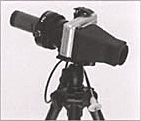
(1) Recommendable system for beginners
A big budget from the beginning is scary. For those who want to have a digiscoping experience as a first stage, we Suggest “ degitan system”( abbreviation Japanese) means to connect a tiny monocular to a compact digital camera.
Within ten thousands JP\ budgets included a camera itself, you can enjoy a 300-800mm telephoto shooting. An advantage of this system enables a super-macrophoto shooting with a minimal of 30cm, and coping with not only birds but plants & insects shooting. A extreme light weight( total weight 1.5kg approx.), super-compact and the cheapest telephoto system !
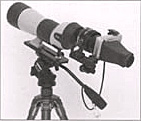
(2) Best mobility
For digiscope lovers who want an adequate image quality and telescoping, take this system of a small scope with a digital camera. The total cost is around one hundred fifty thousands to two hundred thousands Jp\. A digiscoping using a compact digital camera could cover 800 -2400mm focal length, and changing a eyepiece lens to a high magnification lens allows more than 5000mm shooting possible. The total weight of less 3 kg suit best for a mounting climbing goods.
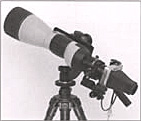
(3) Standard digiscoping system
This system is the connection of a high quality lens with 60-90mm diameters to a digital camera. The precise images of pictures suits a room ornament after printing out and enlargement, and downloaded pictures on internet are superb.
The combination of a S.L.R. camera with an adaptor makes 1000-3000mm focal length. The estimated cost of a digital S.L.R camera system for beginners might be approximately 300,000 JP\.
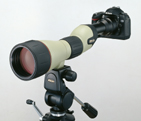
(4) Ultimate advance system to goal
It is the ultimate system whether you would like to take a superb masterpiece by supreme devices. This is an ultimate digiscoping system that basically combines a various sophisticated original parts with a superb optical spotting scope.
The less color aberration, the restraint of distortion and the precise degree are very impressive. Everybody really like to have this system finally. As well as (3), the combination of a S.L.R camera with adaptors produces the 1000-3000mm composite focal length. The combination of a standard digital S.L.R camera and a high-quality scope will cost approximately from 500,000 to 600,000 JP\.
The focal length is calculated by 35 format.
Equipment advice =by courtesy of Digisco . com
http://www.turboadapter.com/

Let's go out for shooting ,however, lots of preparation have to be done!! (Digiscoping challenging orders)
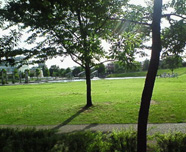 No matter how your equipments are set perfectly, going out into the field for shooting without any preparation right after
the purchase of a camera and equipments is reckless. All you have to do is at first is the shooting practice to the outside subject out of the window of your house. If you are through with this procedures mentioned below, you may proceed to the next stage of going out to the nearby park or the waterfront. You don't have to be in a hurry.
No matter how your equipments are set perfectly, going out into the field for shooting without any preparation right after
the purchase of a camera and equipments is reckless. All you have to do is at first is the shooting practice to the outside subject out of the window of your house. If you are through with this procedures mentioned below, you may proceed to the next stage of going out to the nearby park or the waterfront. You don't have to be in a hurry.
(1)At first, a still subject as a target
What do you see out of the window of your house of 2nd stories? If you see a sign board of a supermarket, let's take a picture of it. When you capture a sign in the center of a sighting device, squeeze the focus and press the shutter button. ( If your camera has AF functions, it's much more convenient.) It will be a big success that you could capture a spider on the board.
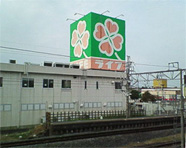
(2)Next, aiming a still bird
The next stage after a still sign is to try to take a picture of a crow on a wire. You should not miss the eyes of the
observed subject on the final focusing time. a 5000mm equivalent super-telescope allows you to see the surrounding sight reflected in the bird’s eyes. The surrounding sights reflected on its eyes. This is Digiscoping.
(3)Focus on the eyes at all times is a principle.
When you will take a picture of a subject with eyeballs, such as wild birds, animals and insects, focus on their eyes in principle. As far as you can focus on their eyes, a little blur or other vignetting seems a small matter to you.
(4)The significant point of the frame composition is to leave some space ahead of the subject.
After confirming that you could get used to capture the images sufficiently, proceed to the frame composition. The most significant point of the composition of birds is to leave some space ahead of the bird, and place the bird out of the center a bit.
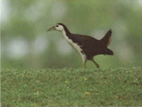
OK : Leaving some space ahead of the subject for a better composition.
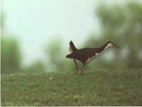
NG : Unbalancing images ahead of the subject

One point advice for Digiscopig a subject by a subject
- Birds digiscoping:
- Get started on a nearby park. Birds around a human living areas get used to us, so that birds shooting is comparably easy. After shooting on a park, visit nearby nature of rivers and tidal flats. Lots of birds are waiting for you.
- Digiscoping animals in a zoo:
- Digiscoing surprise you to see the new discovery such as their expressions and colors which you've never noticed. A super-digiscoping system makes it possible to eliminate the wire netting image, which exists between a digiscoper and animals, if animals would be a short distant from it.
- Digiscoping at a botanical garden:
- Carrying the most compact and cheap digital camera (dejitan in Japanese words), and Visit a botanical garden , where there is a treasury spot of full of colors and nature. A digiscoping system allows 800mm Equivalent telephoto shooting and to capture close-up images of tiny flowers pedals, drops of water and even insects faces.
- Digiscoping the moon:
- A high magnification digiscoing allows to capture the image of the full moon, the crescent moon and even a lunar crater clearly. (For the constellation shooting, a sophisticated astronomical telescope is indispensable.
- Digiscoping a family:
- Digiscoping allows you to capture the images of a baby's dimple, a little kid's lovely behavior and children's natural expressions without notice. Why not take a digiscoping shot with your family.